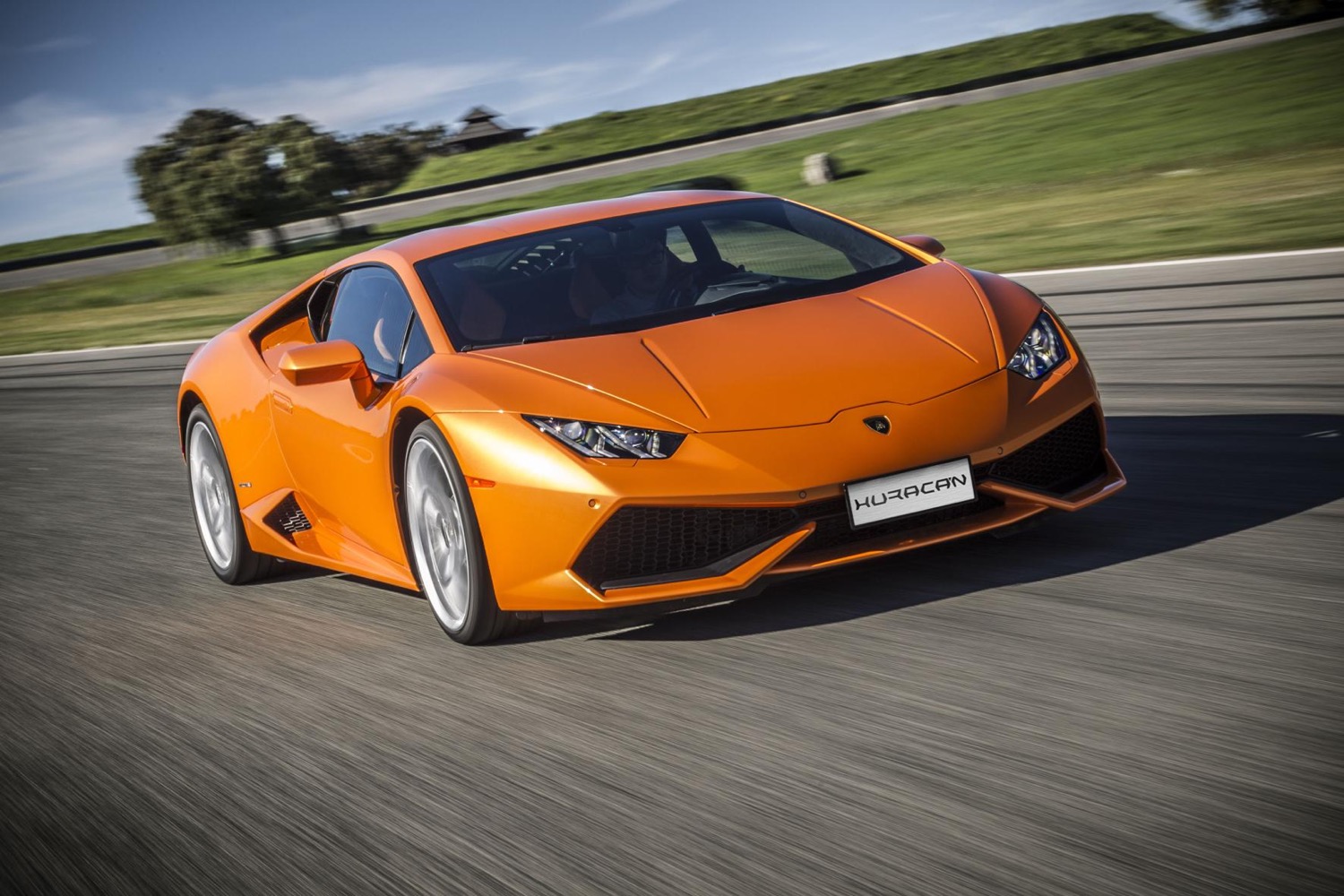
One Spicy Supercar
It may be the “entry-level” model in the company’s lineup, but don’t mistake the Lamborghini Huracán for anything watered-down or tame. The replacement for the popular Gallardo, the Huracán puts Lamborghini’s legendary performance and bravado in a modern and approachable package.
Performance
If you’re looking for performance, you’ve come to the right place. You can tell that just by looking at the Huracán LP610-4, or by decoding its name. “LP” stands for “longitudinale posteriore,” referring to the engine’s longitudinal position behind the driver. The number “610” refers to the 5.2-liter V10’s power output on the metric system; on the U.S. system it actually produces 602 horsepower, along with 413 pound-feet of torque. Finally, the “-4” refers to the car’s all-wheel drive.
The engine is based on the one used in the Huracán’s predecessor, the Gallardo, but it’s learned some new tricks. It features Lamborghini’s Iniezione Diretta Stratificata (IDS) system, which combines port and direct injection, plus cylinder-deactivation and engine start-stop systems.
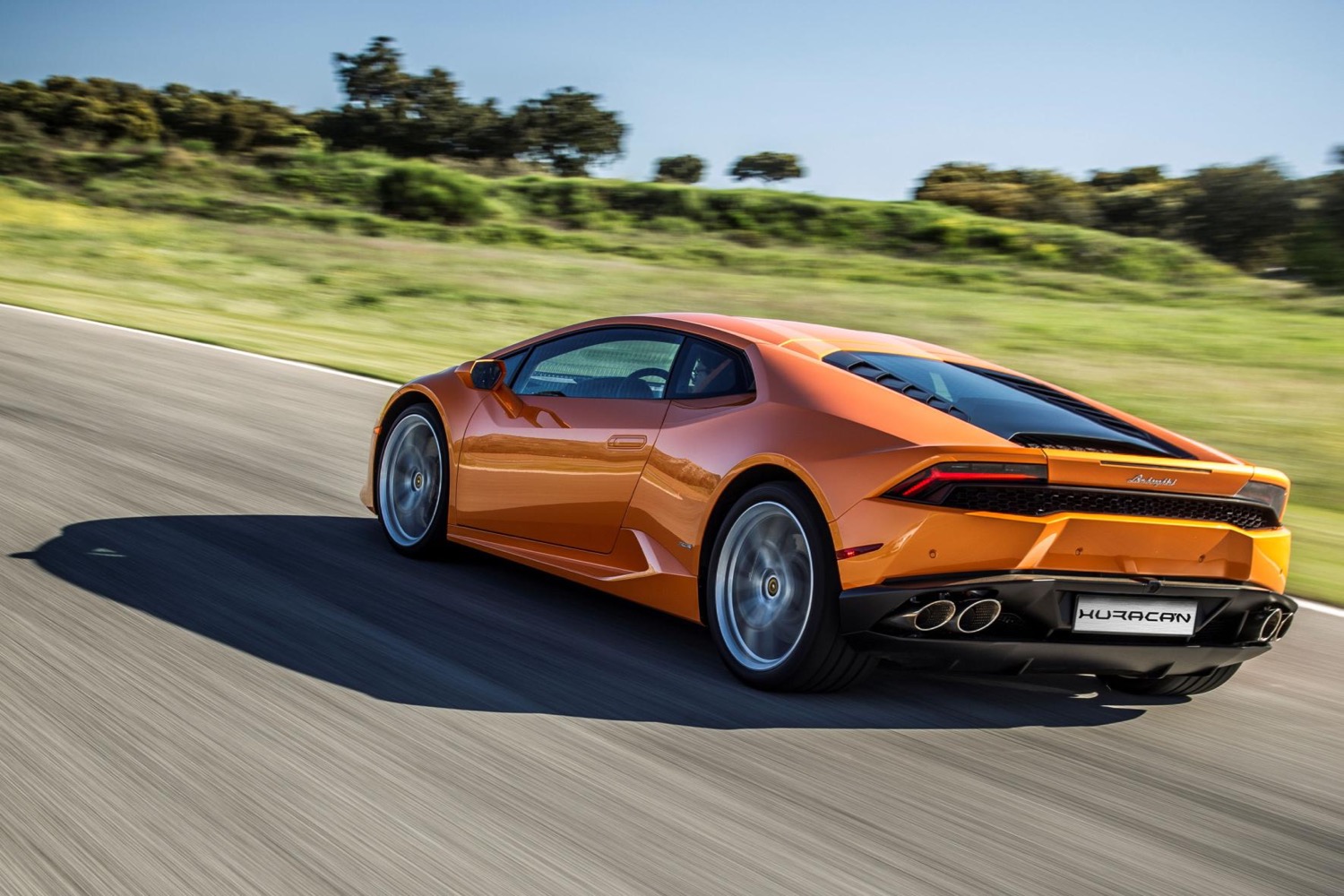 Helping to make the most of the V10’s power is a sophisticated seven-speed dual clutch automated transmission. The twin clutches allow for fast and smoother shifts, and there are also multiple programmable modes, including a “Corsa” (Italian for “race”) mode that incorporates launch control and a system that pre-selects gears under certain conditions, cutting shift times even further.
Helping to make the most of the V10’s power is a sophisticated seven-speed dual clutch automated transmission. The twin clutches allow for fast and smoother shifts, and there are also multiple programmable modes, including a “Corsa” (Italian for “race”) mode that incorporates launch control and a system that pre-selects gears under certain conditions, cutting shift times even further.
Completing the drivetrain is an all-wheel drive system that sends 30 percent of the power to the front wheels and 70 percent to the rear wheels in normal driving. It can also vary that distribution, initiating a 50/50 front/rear split, or sending 100 percent of the power to the back wheels depending on conditions. Note that Lamborghini also offers a rear-wheel drive Huracán LP580-2 model, which we've reviewed separately.
The result of all of that engineering is 0 to 62 mpg in 3.2 seconds and a top speed of over 202 mph for the Huracán coupe, and 3.4 seconds and 201 mph for the Huracán Spyder convertible. The hardtop will also get an EPA-rated 17 mpg combined (14 mpg city, 21 mpg highway), while the Spyder gets an EPA-rated 16 mpg combined (14 mpg city, 20 mpg highway).*
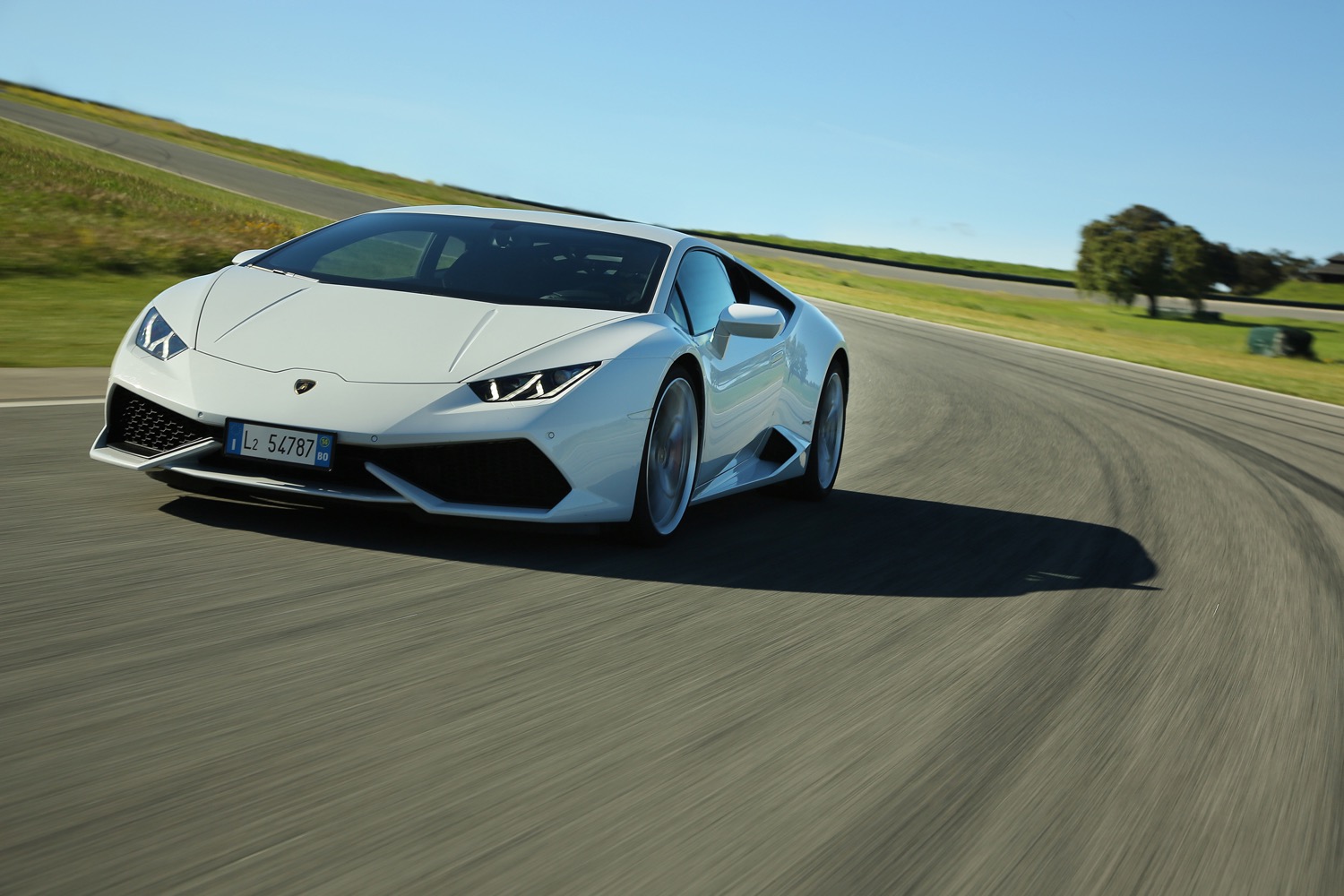 The Huracán’s talents extend beyond mind-bending acceleration, though. Lamborghini emphasized all aspects of performance, and that literally started from the foundation. The Huracán features an aluminum spaceframe chassis, with some carbon fiber thrown in for good measure. This helps drastically reduce weight, improving acceleration as well as the way the car handles.
The Huracán’s talents extend beyond mind-bending acceleration, though. Lamborghini emphasized all aspects of performance, and that literally started from the foundation. The Huracán features an aluminum spaceframe chassis, with some carbon fiber thrown in for good measure. This helps drastically reduce weight, improving acceleration as well as the way the car handles.
Speaking of handling, variable-ratio electric power steering and magnetorheological shock absorbers make the Huracán much easier to drive than you might think. Settings for these and other features are tied into the ANIMA driver control system. Short for “Adaptive Network Intelligent Management" (and meaning “soul” in Italian), it has three programmable modes: Strada, Sport, and Corsa.
Features and Trims
The Lamborghini Huracán is offered as either a two-door, two-seat coupe or convertible. Standard equipment includes LED lighting, power seats, automatic climate control, multifunction steering wheel, infotainment system with 12.3-inch display screen, and leather and Alcantara interior trim.
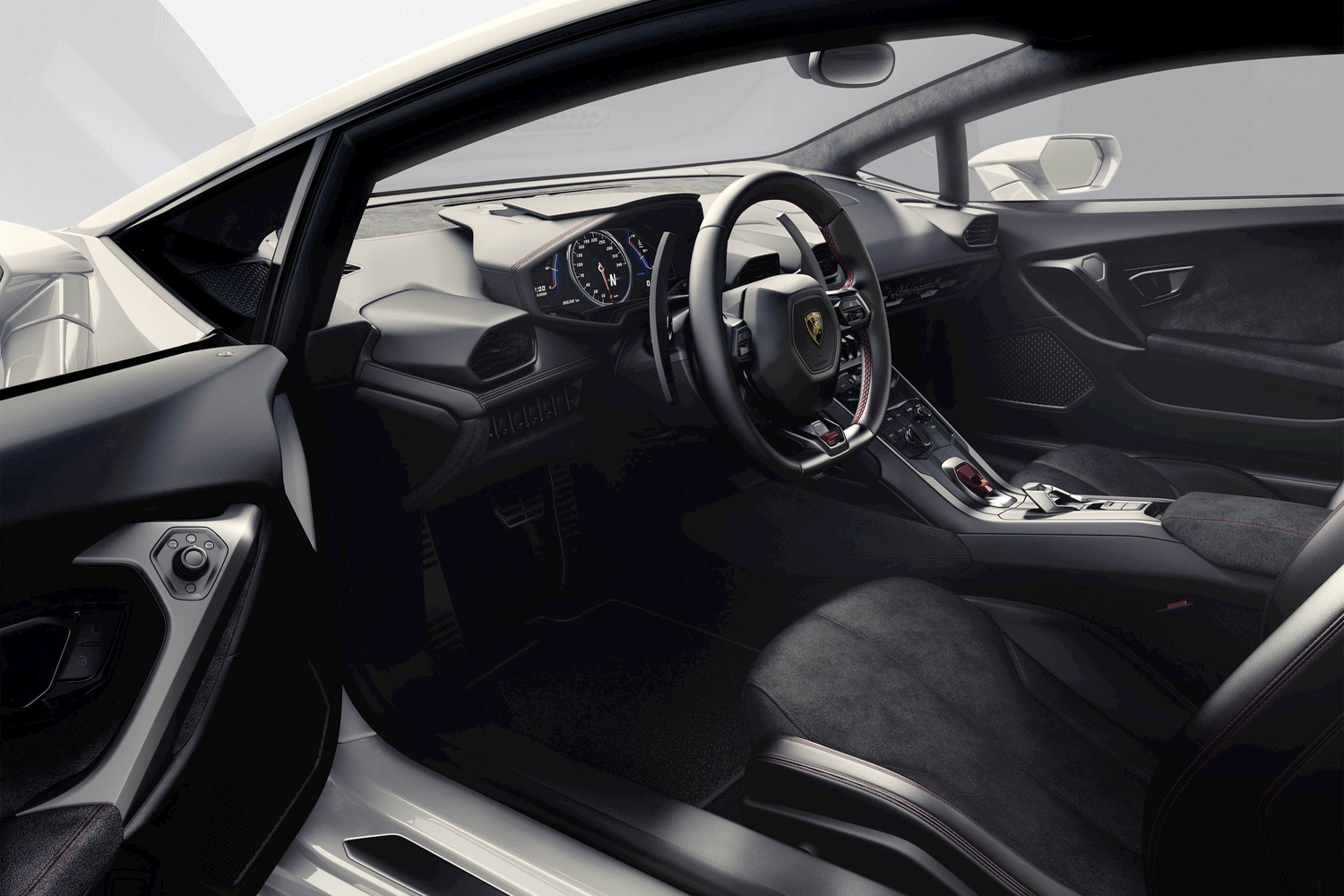 Optional features include heated seats, navigation, LED lighting for the engine compartment, and an upgraded 10-speaker Sensonum® audio system. Through Lamborghini’s Ad Personam program, buyers can also select bespoke exterior and interior colors as well as other features to customize their cars.
Optional features include heated seats, navigation, LED lighting for the engine compartment, and an upgraded 10-speaker Sensonum® audio system. Through Lamborghini’s Ad Personam program, buyers can also select bespoke exterior and interior colors as well as other features to customize their cars.
Design
Despite its smaller size and “entry-level” status, the Huracán features outsized styling that gives it a personality to rival all of Lamborghini’s past showstoppers. It features the latest evolution of the hexagonal styling theme seen previously on the larger Aventador, as well as several concepts like the well-received Sesto Elemento.
The Huracán actually looks angry. Every line, including the cut lines around the Lamborghini badge on the front end, looks like it could draw blood. At first glance, the Huracán also looks a bit like a shrunken Aventador, but there are plenty of details that set the smaller model apart, including the beautifully shaped surfaces surrounding the side air intakes. Like most Italian supercars these days, there’s also a glass engine cover that lets you admire Lamborghini’s handiwork.
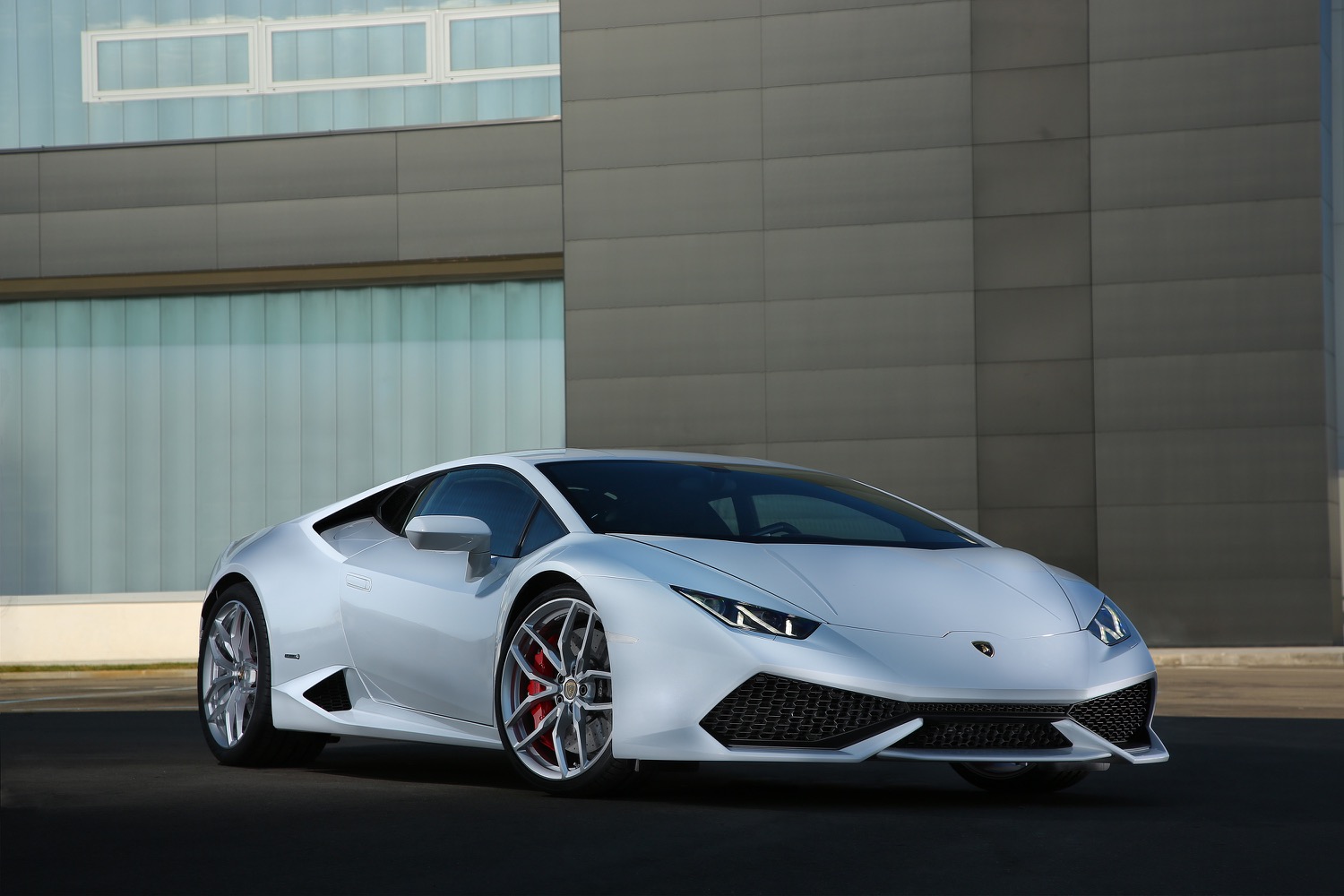 The hexagonal theme carries over to the interior, with a little jet fighter thrown in. The air vents, steering wheel, and speaker grilles for the new optional Sensonum® audio system have the same sharp edges as the bodywork, and the engine start button has a flip cover that looks like the ones used for the weapons-arming switches in some military aircraft. A digital display lends the cockpit a high-tech feel.
The hexagonal theme carries over to the interior, with a little jet fighter thrown in. The air vents, steering wheel, and speaker grilles for the new optional Sensonum® audio system have the same sharp edges as the bodywork, and the engine start button has a flip cover that looks like the ones used for the weapons-arming switches in some military aircraft. A digital display lends the cockpit a high-tech feel.
Safety
Standard safety equipment on the Lamborghini Huracán LP610-4 includes anti-lock brakes, stability and traction controls, and front and head/thorax airbags. A rearview camera and a park-assist system are optional.
Bottom Line
The Lamborghini Huracán can be as vicious as a fighting bull when you want it to, but also docile and civilized when you don’t.
Be sure to contact us online or visit 3Birds Template at 505 W. Franklin St., Chapel Hill, NC 27516 to arrange a test drive of this automotive masterpiece.
*EPA estimates. Your mileage will vary depending on driving habits and conditions.
Image: Lamborghini
